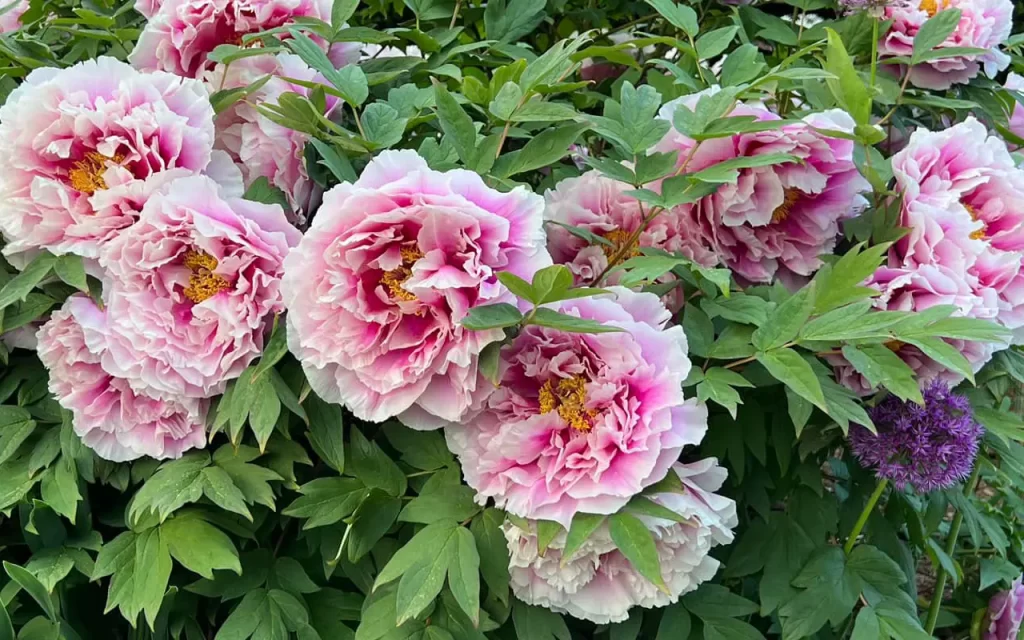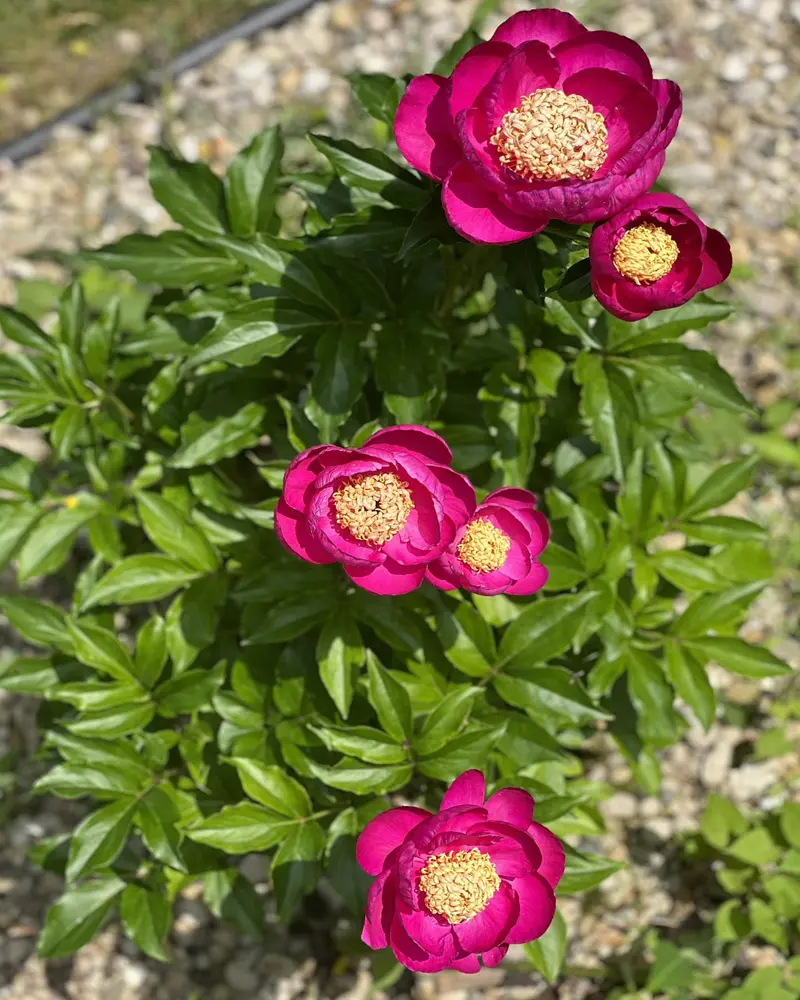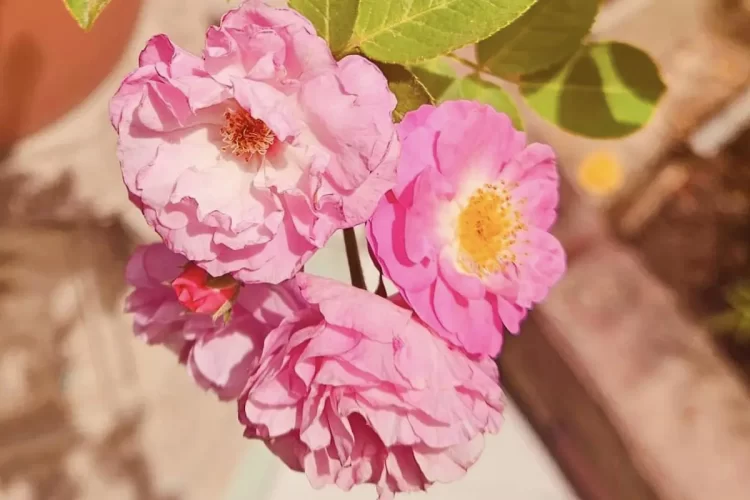Peonies are among the most beloved perennials in gardens worldwide, known for their lush, vibrant blooms and delightful fragrance. With the right planting techniques and proper care, peonies can thrive for decades, creating a stunning floral display year after year. In this comprehensive guide, we will cover all aspects of planting peonies, from selecting the perfect variety to ensuring ideal soil conditions.
Choosing the Right Peony Variety for Your Garden
Peonies come in several types, each offering unique characteristics in terms of bloom shape, color, and growth habit. Selecting the right variety for your climate and garden style is the first step to success.
Types of Peonies
- Herbaceous Peonies (Paeonia lactiflora): These are the traditional garden peonies that die back to the ground each winter. They’re known for large, fragrant blooms and are hardy in zones 3–8.
- Tree Peonies (Paeonia suffruticosa): Unlike herbaceous types, tree peonies have woody stems that remain above ground throughout the year. They produce massive blooms and thrive in zones 4–9.
- Intersectional Peonies (Itoh Peonies): A hybrid of tree and herbaceous peonies, Itoh peonies offer the best of both worlds: lush blooms on sturdy stems with long-lasting foliage. They’re hardy in zones 3–9.
Selecting the Perfect Peony Color and Form
Peonies offer an array of colors, from soft pastels to deep crimson, along with single, double, and semi-double flower forms. Choosing colors that complement your landscape design will ensure a cohesive and visually pleasing garden.
When to Plant Peonies for Optimal Growth
For the best results, plant peonies in the fall. This allows the roots to establish before the winter dormancy period. Fall planting is typically best between late September and early November, depending on your climate.
- In Cold Climates (Zones 3–5): Plant peonies early in the fall, around late September to early October.
- In Mild Climates (Zones 6–8): Planting can be done later in the season, around late October to early November.
Preparing the Soil for Peonies

Peonies thrive in well-drained, nutrient-rich soil. Preparing the planting site properly will encourage strong root development and prolific blooming.
Soil Type and Amendments
- Ideal Soil pH: Peonies prefer a slightly acidic to neutral soil pH between 6.5 and 7.0.
- Improving Drainage: If your soil is heavy clay, consider adding compost, sand, or perlite to improve drainage.
- Fertilizing the Soil: Before planting, incorporate a balanced, slow-release fertilizer (such as 10-10-10) into the soil. Use fertilizers with lower nitrogen levels, as high nitrogen can promote leaf growth rather than flower production.
Sunlight Requirements
Peonies require full sun to thrive. Ensure they receive at least 6–8 hours of direct sunlight each day, as inadequate sunlight may lead to fewer blooms and weaker growth.
How to Plant Peonies Step-by-Step
Once you’ve prepared your soil and chosen the ideal location, it’s time to plant your peonies.
Planting Herbaceous and Intersectional Peonies
- Dig the Hole: Create a hole approximately 2 feet wide and 1.5 feet deep to accommodate the roots.
- Add Organic Matter: Mix compost or well-rotted manure into the bottom of the hole.
- Position the Roots: Place the peony root with the buds (eyes) facing upward, ensuring they are positioned about 1–2 inches below the soil surface.
- Backfill the Hole: Gently fill the hole with soil, pressing it down lightly to remove air pockets.
- Water Thoroughly: Water the peony well to settle the soil around the roots.
Planting Tree Peonies
Tree peonies require a slightly different approach due to their woody stems.
- Dig a Wider Hole: Tree peonies need ample space, so dig a hole around 3 feet wide and 2 feet deep.
- Position the Plant: Place the tree peony in the hole so that the graft union (if grafted) is 4–6 inches below the soil surface.
- Backfill and Water: Fill the hole with soil and water thoroughly to ensure good soil-to-root contact.
Caring for Your Newly Planted Peonies

Establishing peonies in the garden requires attentive care, particularly during the first year.
Watering
- Initial Watering: Water deeply after planting, and continue to water regularly during the first season to encourage root establishment.
- Ongoing Watering: Peonies are relatively drought-tolerant once established but should be watered during dry periods.
Mulching
Apply a 2-inch layer of mulch around the base of the plant to retain moisture and regulate soil temperature. Avoid placing mulch directly against the stems, as this can encourage rot.
Staking and Supporting Peonies
As peonies mature, their large blooms may require support, especially after rain.
- Use Peony Rings: Place peony rings around the plant early in the season to support heavy blooms.
- Tie Stems: Gently tie stems to stakes using garden twine, being careful not to damage the stems.
Fertilizing Peonies for Abundant Blooms

Peonies benefit from light fertilization to promote healthy growth and blooming.
- Early Spring: Apply a balanced fertilizer (10-10-10) around the plant base as new growth emerges.
- After Blooming: Avoid fertilizing immediately after flowering, as this is when the plant is storing energy for the next season.
Pruning and Deadheading Peonies
Pruning and deadheading are essential to keeping peonies looking their best.
- Deadheading Blooms: After blooms fade, remove spent flowers to encourage the plant to direct energy toward root growth.
- Fall Cleanup: Cut back herbaceous and Itoh peonies to the ground after frost. For tree peonies, simply remove any dead or weak branches.
Common Peony Problems and Solutions
While generally hardy, peonies can encounter a few issues. Here’s how to address them effectively:
Botrytis Blight
A common fungal issue that causes gray mold and wilting stems.
- Solution: Remove and destroy affected plant material. Water at the base of the plants and maintain good air circulation around them.
Powdery Mildew
Appears as a white, powdery coating on leaves.
- Solution: Apply a fungicide or use a natural remedy like a baking soda spray.
Peony Wilt
Caused by wet, poorly drained soil, resulting in wilted or blackened stems.
- Solution: Improve soil drainage by amending the soil and avoid planting in waterlogged areas.
When to Expect Blooms and Tips for Longer Flowering
Peonies are worth the wait! Understanding their blooming cycle and how to prolong blooms will add joy to your garden.
Bloom Timing
Most peonies bloom in late spring to early summer, depending on the variety and local climate.
Extending the Bloom Season
- Plant Different Varieties: To enjoy peony blooms over several weeks, plant early, mid, and late-season varieties.
- Regular Deadheading: Removing faded blooms prevents energy from going into seed production, encouraging longer blooming.
Conclusion: Enjoying the Beauty of Peonies in Your Garden
With the right preparation, planting, and care, peonies can become a breathtaking centerpiece in any garden, rewarding you with stunning blooms year after year. From selecting the right variety to maintaining soil health, this guide covers all the essentials for successfully planting and nurturing peonies.


